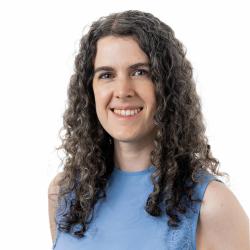Biography
Rachel studied for her PhD with Dr Patrick Varga-Weisz at the Babraham Institute. Her research focussed on histone modifications that are linked to gut microbial metabolism. Bacteria in our gut ferment fibre in our diet to produce short chain fatty acids that can be added onto histones to produce epigenetic switches such as histone crotonylation and acetylation. Together with her colleagues, she found that when the gut microbiome was depleted in mice by antibiotics, histone crotonylation and related modifications were reduced in intestinal epithelial cells along with changes to genes expression. This suggested that the gut bacteria could use these biproducts of digesting fibre to influence the function of the cells lining our intestine.
After her PhD, Rachel was a visiting scholar with Dr Kazuyuki Ohbo, at the Yokohama City University in Japan, where she investigated how knock-out of the protein Wfdc5a resulted in infertile male mice. Rachel then did a Post-doctoral scholarship at the University of California Irvine, where she helped to identify that in mice with loss of one copy of Apc clock disruption drives loss of both copies of the Apc gene which hyperactivates Wnt signalling and accelerates tumour progression. She also compared gut microbiome composition between clock disrupted and cancer mice, finding that common groups of bacteria present in the gut microbiome including Bacteroides, Helicobacter and Megasphaera are altered in both conditions. After working as a Senior Scientist on intestinal ageing at Altos Labs, Rachel joined the Unit in November 2024 and is currently working to share MRC Toxicology Unit science and research to people of all ages and backgrounds. Rachel loves combining science and creativity, with writing, digital art, textiles and painting. She is passionate about sharing scientific knowledge to increase the impact of research and encourage people to be excited about biology!
Rachel is responsible for the Unit's communication activities, including news, press, digital, social media, website and branding. She also leads on the public engagement strategy for the Unit to increase public awareness and understanding of the Unit’s research.


